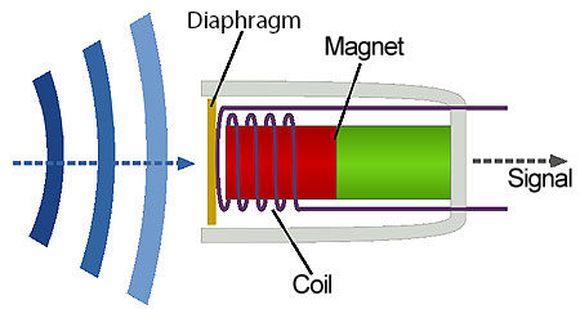2. What is a dynamic microphone?
Microphones convert sound waves into electrical energy. Technically, a microphone is an electro-acoustic transducer. When a magnet moves near coiled wire an electric current is induced. This principle is crucial to the design of dynamic microphones. Most microphones mimic the operation of the human ear with a thin membrane (diaphragm) that vibrates in response to variations in sound pressure. In a dynamic microphone, a small movable coil of wire is attached to the diaphragm near a magnet. As the diaphragm moves back and forth in response to incoming sound waves, the coil moves near the magnet, inducing an alternating electric current. This is transmitted through the microphone cable to a preamplifier where its level is boosted for recording or amplification.

Because one diaphragm will not give a linear response across all audio frequencies, most dynamic microphones have peaks and valleys in their frequency response and are less sensitive to very high or low frequencies than condenser microphones. This is due in part to the dynamic microphones heavier diaphragm, and can actually be an advantage in many situations; many manufacturers tailor the limited response of dynamic mics for specific applications. For example, dynamic mics that respond more to lower frequencies may be chosen for bass heavy instruments, such as bass guitar cabinets and bass drums. Also, some manufacturers have created dynamic microphones with more than one element (the principle behind the two-way loudspeaker in reverse) but these designs tend to be costly and present technical challenges to their designers.



